BACTERIOPHAGES
Bacterial viruses were discovered independently by Twort (1915) and d'Herelle (1917) as filtrable transmissible agents.
The ability of phages to form plaques on bacterial lawns noted by d'Herelle who attributed the linearity of plaque assays to the self-replicating nature of particles (as expected for a subcellular pathogen) rather than a poison effect.
The early hope that phages might be useful in combating pathogenic bacteria (either therapeutically or in decontamination of the human environment, such as in purifying water supplies) did not materialize.
Max Delbruck, Salvador Luria and others studied and developed standardized systems, quantitative analysis, genetic and biochemical procedures using T-phages as a model.
Types of Phages
- RNA and DNA genomes
- Phages with ssRNA genomes are mostly small. Attach to pili. MS2.
- Phages with small ss DNA genomes (< 10 kb). Have two groups:
- Isometric - spherical (X174 with 25-35 nm). X174 genome was the first to be fully sequenced.
- Filamentous (fd, Ff, f1 and M13). M13 is a cloning vector of high yields. About 880 nm in length.
-
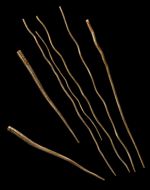 M13
M13
- Phages with medium to large dsDNA genomes (30-200 kb). Includes most of the temperate phages that establish lysogeny with 3 prototypes:
- Coliphage (inserts DNA at one or a few preferred sites of host chromosome). A paradigm for gene control in developing systems.
- Mu-1 (insert anywhere in the host chromosome by use of a phage-code transposase).
- P1 (prophage DNA is not inserted into the chromosome but instead maintained as a plasmid.
- Large phages ("coliphages") selected by the Luria-Delbruck school fall into four groups:
- T1 (about 50 kb)
- T2, T4 and T6 (about 170 kb)
- T3 and T7 (40 kb)
- T5 (about 130 kb)
- Coliphages have become working horses of molecular biology and remain the most thoroughly understood biological objects.
The T4 Phage
- Has been the object of many classical studies.
- More than 200 genes have been identified through mutational studies.
- T4 virion contains 43 phage-encoded proteins, 16 located in the head that encapsulates the DNA and 27 form the tail.
- The dsDNA is distinctive in containing hydroxy-methylcytosine (heavily glucosylated) rather than cytosine (C).
- Within 22 minutes after infection the E. coli host lyses and releases up to 300 viral particles.
- T4 particles each contain a genome bearing 200 genes.
A normally dividing E. coli produces about 3,000 genes in 40 min, while the machinery of an infected bacterium can generate 60,000 genes in an equivalent length of time.
 |
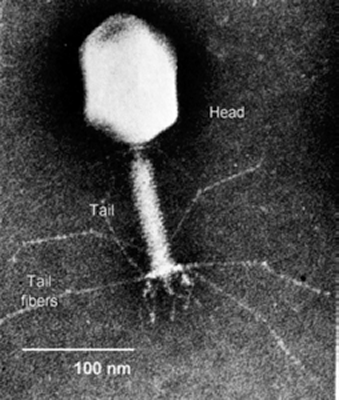 |
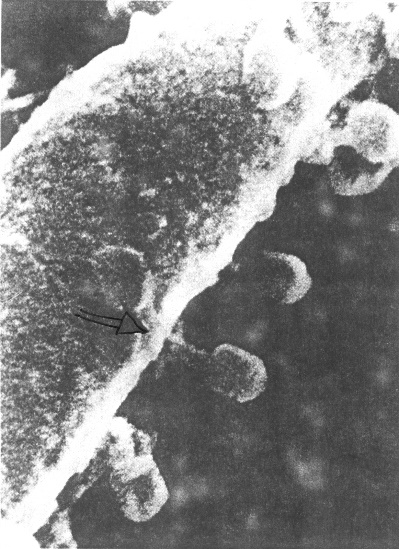
The T4 phage (Myoviridae) on pilus of E. coli
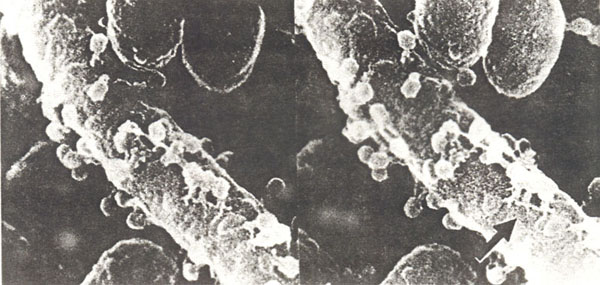
Image here
Replication of X174
Families of viruses infecting bacteria
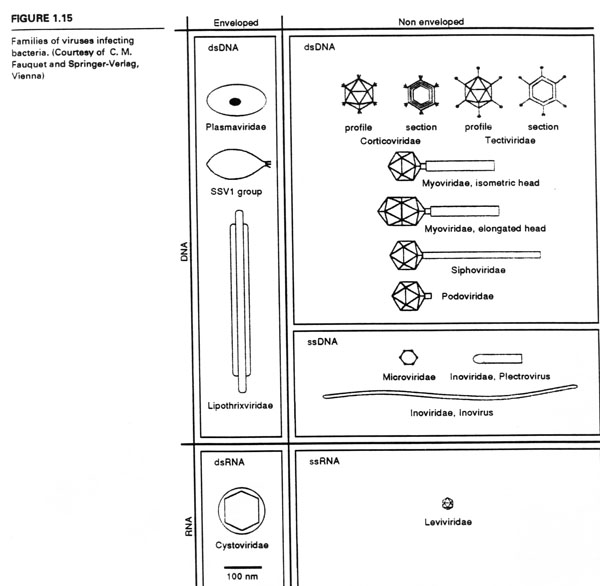
Phage Ecology
Phages are found throughout the prokaryotic world in a variety comparable with that of eukaryotic viruses.
Little is known about their natural ecology or population biology as compared to phage development in infected cells.
In some natural environments phage-like particles are much more numerous that one might suspect from plaque assays on susceptible hosts.
In estuaries, concentrations as high as 108 phages/ml have been reported.
If most of these are infectious (and they may very well not be), they potentially could play a major role in the natural cycling of the biosphere.